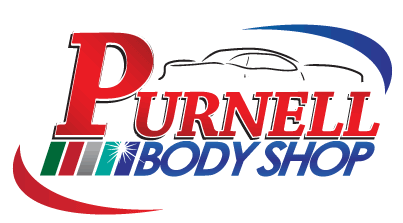Understanding Auto Body Materials: Steel vs. Aluminum Repairs
Modern vehicles primarily come in two main body materials: steel and aluminum. Each has its unique characteristics, which significantly impact repair techniques, costs, and benefits. In this article, we’ll delve into the key differences between repairing vehicles with steel and aluminum bodies to help you make an informed decision.
Repair Techniques
Repairing Steel Bodies:
Steel has been the traditional material used in vehicle manufacturing for decades due to its strength and durability. When it comes to repairing steel-bodied vehicles, the process typically involves:
a) Welding: Steel panels can be welded together to repair damaged sections. This method allows for a strong bond, ensuring the structural integrity of the vehicle.
b) Straightening: Steel panels are more forgiving when it comes to reshaping and straightening, making it easier to repair minor dents and creases.
c) Cost-effective: Welding and straightening processes for steel are generally more affordable than aluminum repairs, mainly because the equipment and materials are more readily available.
Repairing Aluminum Bodies:
Aluminum, on the other hand, is lightweight and corrosion-resistant, making it an excellent choice for modern vehicles aimed at fuel efficiency and reduced emissions. However, repairing aluminum-bodied vehicles requires a different approach:
a) Riveting and Bonding: Welding aluminum can be challenging due to its lower melting point compared to steel. Therefore, aluminum panels are often repaired using rivets and adhesive bonding, which requires specialized training and equipment.
b) Specialized Tools: Repairing aluminum vehicles demands specialized tools and training for technicians, increasing the overall repair cost.
c) Precision: Aluminum repairs require a higher level of precision, as any mistakes can result in weakened structural integrity.
Cost
Costs associated with repairing steel and aluminum-bodied vehicles can vary significantly due to the differences in materials and techniques involved.
Steel Repairs:
- Generally more cost-effective, as welding and straightening are standard practices.
- Availability of steel panels and parts is higher, reducing replacement costs.
- Labor costs are typically lower due to the widespread use of steel in the automotive industry.
Aluminum Repairs:
- Aluminum panels and parts are more expensive than their steel counterparts.
- Specialized tools and training increase labor costs.
- Adhesive bonding and riveting can require additional time and resources.
Benefits
Both steel and aluminum have their advantages when it comes to auto body repairs:
Steel Benefits:
- Known for its durability, steel provides excellent protection in high-impact collisions.
- Steel is readily available, making it easier and more cost-effective to source replacement parts.
- Repair techniques are well-established, ensuring reliable results.
Aluminum Benefits:
- Lightweight construction improves fuel efficiency and handling.
- Corrosion resistance prolongs the vehicle’s lifespan.
- Aluminum-bodied vehicles often exhibit superior dent resistance in low-speed impacts.
Understanding the differences between repairing steel and aluminum-bodied vehicles is crucial for making informed decisions when it comes to collision repairs. While steel is the traditional choice, aluminum has gained popularity due to its lightweight and corrosion-resistant properties. Each material requires specific repair techniques, impacting costs and benefits.
Ultimately, the choice between steel and aluminum repairs will depend on factors such as your vehicle’s make and model, the extent of damage, and your budget. Consulting with an experienced collision repair shop like Purnell Body Shop will help you make the right decision and ensure your vehicle is safely restored to its pre-accident condition. Whether steel or aluminum, the goal remains the same: to get you back on the road with a safe and properly repaired vehicle.


